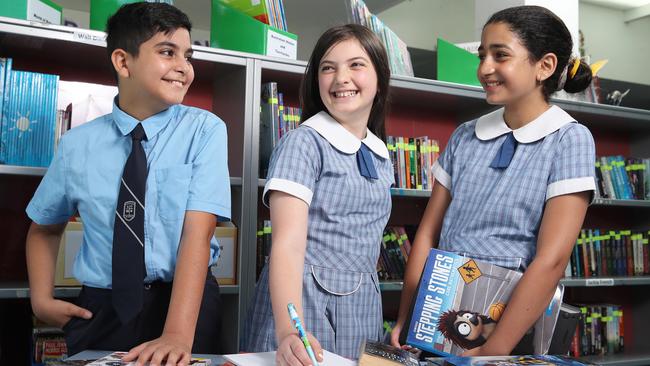NAPLAN 2021: gap between boys and girls widens
The latest NAPLAN results show that our education system is almost a two-tiered one among the sexes, with boys being forgotten.
NSW
Don't miss out on the headlines from NSW. Followed categories will be added to My News.
More than one in five Year 9 boys in the state still cannot meet the national minimum standard in writing, while now one in eight boys also cannot make the grade when it comes to reading.
The gap between girls and boys has widened in almost every test domain except for writing in the latest round of NAPLAN tests following three months of homeschooling in NSW.
The results mean in terms of meeting the National Minimum Standard, fewer boys made the grade with a difference of 7.2 percentage points for grammar and punctuation, 4.9 per cent for spelling and 5.5 per cent for reading and 0.8 per cent in numeracy when compared to girls this year.
While the gap narrowed for writing between girls and boys, it still has the biggest discrepancy between the sexes with a difference of 10.7 percentage points between them in the tests conducted in March.
Final results released by the Australian Curriculum and Assessment Reporting Authority confirmed preliminary test scores reported earlier this year showing the percentage of Year 9 students in NSW recorded one of their worst years on record for reading.
Former head of The King’s School and author of Boy Oh Boy: How to Raise and Educate Boys, Dr Tim Hawkes, said the education sector had overlooked boys in favour of focusing on girls in science, maths and technology subjects.
“The feminists are to be congratulated for their advocacy on women and girls in relation to their academic performance,” he said.

“But there has been an almost culpable lack of advocacy on behalf of boys.”
He said particularly in the early years, the learning style of sitting passively was not conducive to boys, who were responsible for between 70 and 80 per cent of the misbehaviour in primary school because they were disengaged.
Education expert Dr Kevin Donnelly said changes introduced in the 1980s and 1990s meant there was a big push to positively discriminate for girls.
“What it meant was, they really changed the way teachers taught and changed the focus in literacy and numeracy,” he said.
“There was more inquiry-based learning, teachers became guides by the side, and that really disadvantaged boys, because boys need more discipline and structure.”
Boys’ education consultant and chief executive of the Boys Forward Institute, Dr Ian Lillico, said school lockdowns around the world increased disparity between the sexes. “What happened during the many lockdowns is … there was no direct teacher interaction – for many boys it is not the same,” Dr Lillico said.
Centre for Independent Studies education expert Glenn Fahey described the boys’ performance as “woeful” and would mean those boys would be less likely to go to university or get a job.
“Statistics show that outcomes for young men are much worse than for young women, whether it is being engaged in work or accessing higher education,” he said.
Originally published as NAPLAN 2021: gap between boys and girls widens




